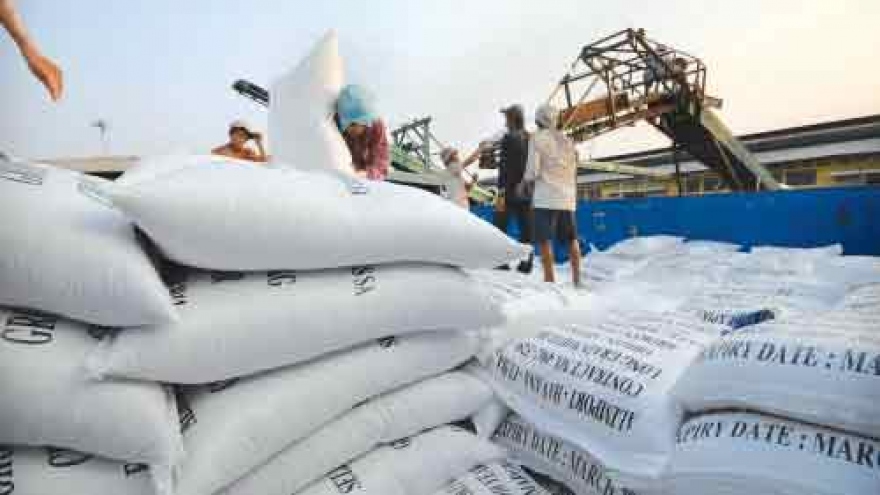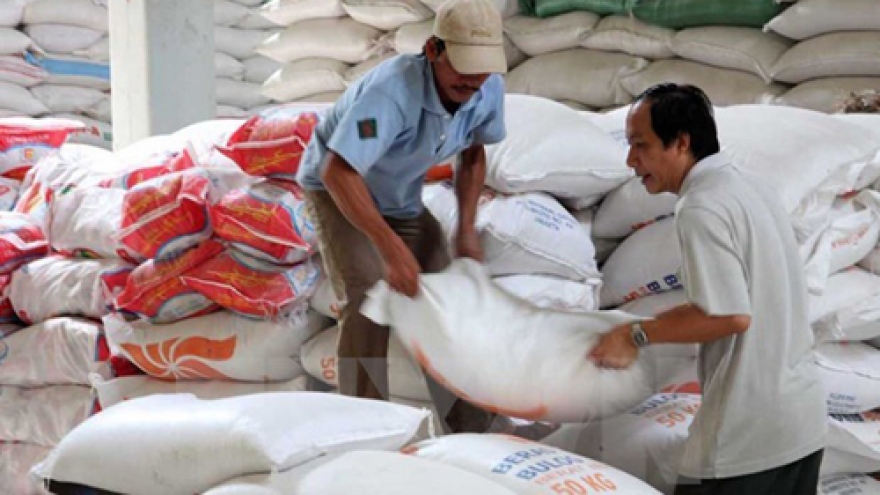Rice exporters suffer from low demand
Domestic rice exporters are grappling with low demand in traditional importing markets and lower prices on global markets.
 |
A Ministry of Agriculture and Rural Development report showed the country shipped abroad about 3.37 million tons of rice worth US$1.51 billion in the first eight months of this year, down 16.6 % in volume and 13.1% in value over the same period last year.
The average rice export price was US$450 per ton in the first seven months, up 4.95% year-on-year.
China remained as Vietnam’s biggest rice buyer in the January-July period, importing 36% of the total.
However, rice exports to this market in the period amounted to only 1.04 million tons worth US$476 million, down 21.6% and 11.9% respectively.
Rice shipments to other markets also slid strongly, including falls of 66.4% for the Philippines, 54.4% for Malaysia, 36.3% for Singapore and 37.6% for the US.
Vietnam saw robust growth in outbound rice sales from Indonesia, the second biggest rice importer, with 353,000 tons worth US$140.4 million, up 25.5 times in volume and 26.8 times in value compared to the same period last year.
However, the increase in this ASEAN market could not compensate for drops in other markets.
The ministry ascribed the plunge to China’s tight controls on rice imports through border trade in the north of Vietnam to prevent smuggling, leading Vietnam’s rice exports to the northern neighbor to plummet.
At a recent meeting with the ministry, chairman of the Vietnam Food Association (VFA) Huynh The Nang reasoned that Vietnamese exporters have yet to meet China’s plant quarantine requirements for rice and rice bran.
Not only in China, Vietnam's rice is losing in the competition with rivals such as Thailand, India, Cambodia in other markets, especially those that set high technical barriers.
For instance, in 2014, Vietnam sold 70,000 tons of rice to the US compared with Thailand's 400,000 tons, but last year’s figure shrank to 44,000 tons while Thailand exported over 400,000 tons.
Rice exports from Vietnam to the European Union (EU) kept dropping from 24,000 tons in 2013 to 20,000 tons in 2014 and only 18,000 tons last year.
The Vietnam-EU free trade agreement (FTA), expected to take effect from 2018, will allow Vietnam to ship 100,000 tons of rice annually to the market at a zero duty. But Nang said Vietnam will find it hard to boost rice exports if it cannot meet high standards of the EU.
Bui Thi Thanh Tam, general director of the Northern Food Corporation (Vinafood 1), said demand for rice imports from traditional markets such as the Philippines, Indonesia and Malaysia has been lower than expected this year.
In African markets, Vietnamese rice is less competitive than Thailand’s as the latter can sell different types of rice at lower shipping costs. In addition, Vietnamese firms hesitate to ship rice to Africa due to possible risks.
Moreover, rice export prices are still in the downward trend. According to Reuters, the prices of Asian rice have continued dropping over the last week due to ample supply and weak global demand.
Thailand has offered its lowest prices in nearly six weeks. The rice prices in India, Thailand and Vietnam, the three countries that account for about 60% of the world’s rice supply, have shed from late July due to a lack of buyers and increased supply.
The reference free-on-board (FOB) price of 5% broken rice dropped to US$365-370 per ton last week, the lowest since March 9. The 5% broken rice prices of India and Vietnam also declined by US$3 per ton to US$375-385 per ton and US$348-350 per ton, respectively.
Export price falls have weighed on local prices. Nguyen Thanh Phong, director of Van Loi Company in Tien Giang Province, told the Daily that the domestic rice price has dropped by VND300-400 per kilogram in the past week.
At Ba Dac food wholesale market in Tien Giang’s Cai Be District, firms buy unprocessed IR 50404 paddy at just VND6,100-6,300 per kilogram, down VND300-400 over a week ago. Unprocessed IR 50404 rice is sold at VND6,000-6,100 a kilogram, down VND300-400.
Fresh IR50404 paddy in the Mekong Delta is traded at VND4,100-4,200 per kilogram compared to last week’s VND4,400-4,500.
Pham Thanh Tho, deputy director of the food business at Loc Troi Group, said that one reason behind the rice price falls is rice exports through border trade with China have been blocked and mounting competition from Thailand and Pakistan.


